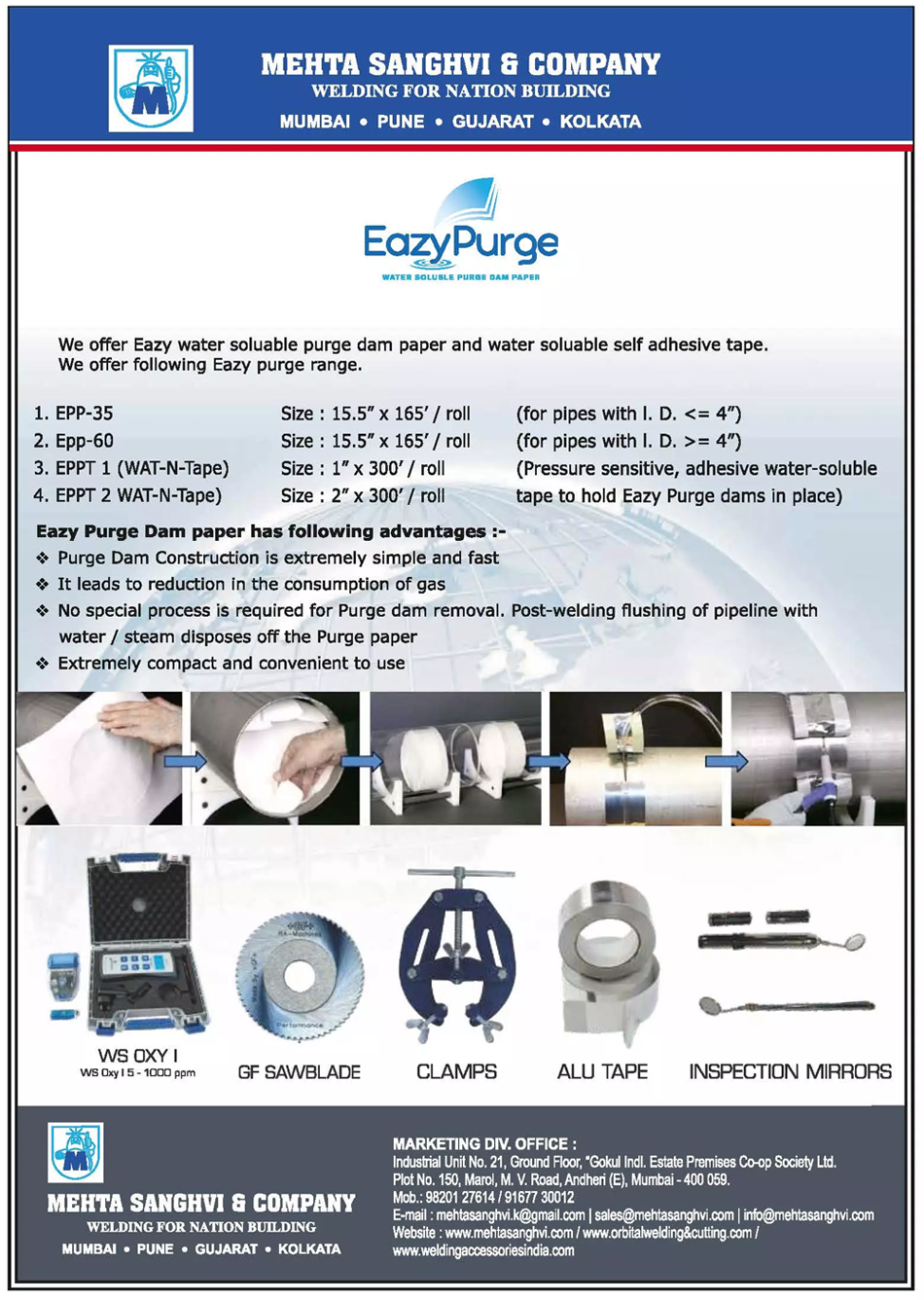WS Purge cylinder

A purge cylinder is a container or cylinder used in various industrial processes to remove or displace undesirable substances or gases from a system or environment. The specific use and design of a purge cylinder can vary depending on the application.
Common uses of Purge Cylinders:
1. Welding: In welding applications, a purge cylinder is often used to introduce an inert gas, such as argon orhelium, into the welding area. This inert gas displaces oxygen and other contaminants, preventing oxidation and ensuring a clean and high-quality weld.
2. Air Purging: Purge cylinders can be used to purge air or other unwanted gases from pipelines or containersbefore filling them with a different gas or substance. This is common in the oil and gas industry and chemical manufacturing.
3. Purging in Laboratory Settings: In laboratory settings, purge cylinders may be used to create controlled environments with specific gas compositions for experiments, testing, or research.
4. Environmental Remediation: Purge cylinders can be used in environmental remediation efforts to remove or control the release of harmful gases or contaminants from soil, groundwater, or storage tanks.
The specific design and operation of a purge cylinder can vary based on its intended application. They often feature valves and connections for controlling the flow of gas into or out of the system. Purging is essential in situations where the presence of unwanted gases or contaminants could compromise the quality or safety of a process or product.
Key features of WS Purge cylinder:
The WS Gas Cylinder is available for pipes from 145 mm to 1000 mm diameter. This tool has two heat-resistant sealing lips, being heat-resistant to 280°C for up to one hour. The tool has an extremely short purge time of only 2½ minutes for all dimensions, a feature that no other purge tools provide. The flowrate is 10% of the internal pipe diameter, and 20% if welding titanium. When welding thin-walled pipes with only a few elbows, it is recommended to use the WS Gas Cylinder, fitted with a pull ball if necessary.
The difference between the WS and the WS Plus is in the design and heat resistant material of the sealing lips. By changing the lips, e.g. the sealing lips on a 265 mm WS can be replaced with 12" lips, it is possible to weld three different pipe diameters with the same cylinder.
The two tools overlap each other. The choice of product depends on the particular welding application. Factors to consider are the internal diameter, the number and geometry of the bends, the distance the tool is to be pulled, the wall thickness, any pre-heat, and etc. Only then can a decision be made.
We also have tailor-made options available as per the request from the customers. For more info Contact Mehta Sanghvi on 9820127614 / response@weldingaccessoriesindia.com
Benefits of WS Gas Cylinder
• Get valuable cost savings in gas and time
• Fast and easy to use
• Short purge time (2,5 min)
• Heat resistant up to 280°C (max for 1 h)
• Airtight in all positions
• Efficient airing which prevents back pressure
• Patented triple-sealing lip elements
• Efficient gas diffuser with high diffusion
• Tool is one complete unit
• Suitable for TIG and MIG/MAG
• Gas flow rates (L/min) are 10% of internal pipe diameter
Purge cylinder application industries
Purge cylinders find applications in various industries where the removal or control of unwanted gases, contaminants, or atmospheric conditions is essential for maintaining the quality, safety, or efficiency of processes. Here are some industries and applications where purge cylinders are commonly used:
1. Welding and Metal Fabrication:
• Inert gas purging during welding to prevent oxidation and ensure clean welds.
• Removing oxygen and contaminants from the welding environment.
2. Oil and Gas:
• Purging pipelines and vessels to remove air or other gases before filling with oil, gas, or other substances.
• Creating inert environments for safe storage and transportation of flammable or reactive gases.
3. Chemical Manufacturing:
• Purging reactor vessels and pipelines to maintain controlled atmospheres and prevent unwanted reactions.
• Ensuring the purity of gases used in chemical processes.
4. Food and Beverage:
• Purging containers, tanks, and packaging to remove oxygen and extend the shelf life of food products.
• Creating controlled atmospheres for food processing and packaging.
5. Pharmaceuticals:
• Purging containers and equipment to maintain sterile conditions.
• Creating controlled environments for drug manufacturing.
6. Electronics Manufacturing:
• Purging during soldering and assembly processes to prevent oxidation and contamination of electronic components.
• Maintaining controlled atmospheres for semiconductor manufacturing.
7. Environmental Remediation:
• Removing or controlling the release of harmful gases or contaminants from soil, groundwater, or storage tanks during environmental cleanup efforts.
8. Laboratory and Research:
• Creating controlled gas atmospheres for experiments, research, and testing.
• Maintaining specific gas compositions for analytical equipment.
9. Aerospace and Aviation:
• Purging fuel tanks and aircraft components to prevent the buildup of flammable gases and ensure safety during maintenance and repair.
10. Automotive:
• Purging fuel and brake lines to remove air and ensure proper functioning.
• Creating controlled atmospheres for coating and painting processes.
The specific applications and requirements for purge cylinders can vary widely within each industry, and they play a crucial role in maintaining product quality, safety, and process efficiency.
Eazy Purge Water Soluble


